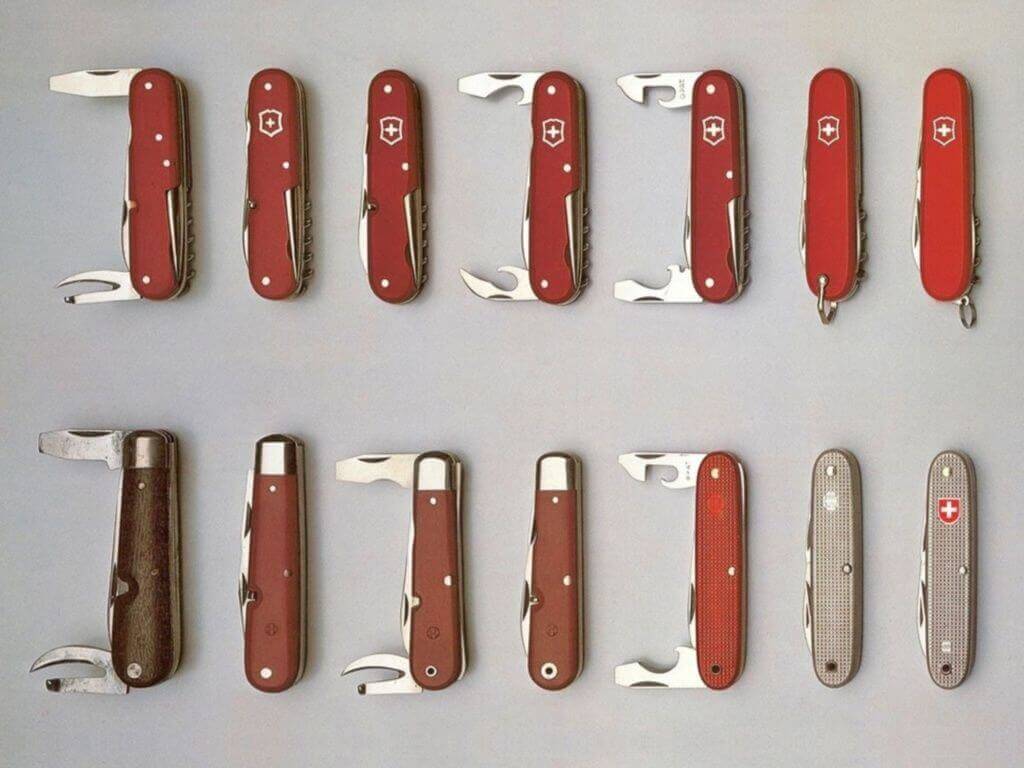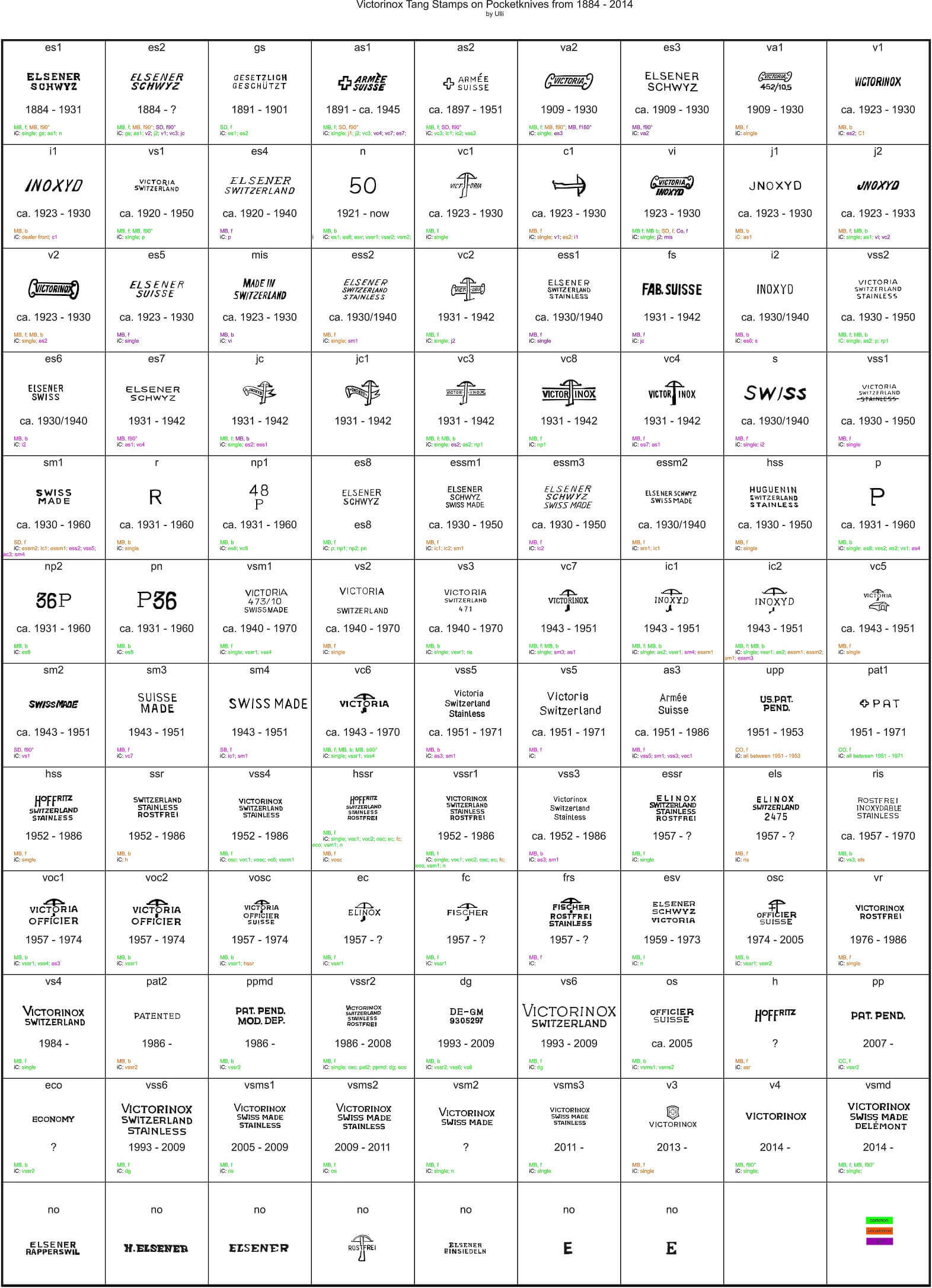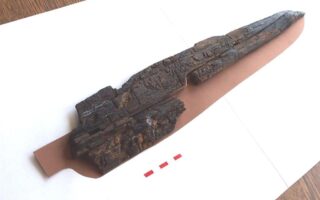How Old is My Swiss Army Knife? How to Date a SAK?
The Swiss Army Knives hit the market in 1891. Since then in its 125 years of history, they raised the quality standards for knives and have become a model of durability and dependability. The Victorinox Swiss Army Knife gained an impressive worldwide reputation cause of its rugged and rich heritage. With times the knives have become as highly desired by collectors as they are to those who actually use the tool. But since these knives are very old, finding a vintage unit might raise a lot of question marks. Whether you got the knife from your grandfather or got it at a garage sale, you might wonder how old is your swiss army knife. Whether to sell it or establish its history there are some general rules to help you figure out the age of your swiss knife. Some modern knives are relatively simple to identify, but others could cause a lot of confusion. Here, is everything you need to know about dating a Swiss Army Knife.
Verify Authenticity
Well, first thing first you need to figure out if your swiss army knife is authentic. Swiss Army knives are usually easy to spot.
Look at the physical characteristics of your soldier knife model: color, shape, and blade style/count. Throughout the company’s history, surprisingly the knives have had only a handful of makeovers. I guess when it comes to swiss soldier knives aesthetics aren’t the top priority. Still, there are some slight but noticeable changes in the knives, during its over-100-year run.
Look for the Victorinox “cross” logo or (on military-issue knives) the coat of arms of Victoria Switzerland. However, it may happen that these identifiers could have come off or been removed from a genuine knife over time. And again a fraud knife could have one of these symbols and still be fake. So it’d be wiser if you get your knife verified by a trustworthy and knowledgeable antique appraiser or a knife collector.

Dating a Swiss Army Knife with Stamps
Dating a swiss Army knife gets complicated cause sometimes a knife which is manufacture in 1990 may have a similar appearance to a knife made in 1920. Sometimes a very old knife may look better than the newer alternative cause of good preservation and less use. Again sometimes you can just say a knife is very old by the obvious old look of it. Older knives usually have more wear and tear.
The real difference is the stamp. Most knife manufacturers stamp their knives with various codes to help users identify the knives and date them. The companies who don’t stamp the knives bring in the logos. Sometimes a logo can tell a lot about a knife’s history, as brands tend to change logos over time. So, like the other brands, for Victorinox Swiss army pocket knives you need to pay attention to the stamp. That’s how you can get a hint about the age of your knife.
For stamps, the brands mostly choose the area on the blade closer to the handle of the knife. Some brands do it on the handle. In that case, it may come off due to rough usage and exposure to wear and tear. Victorinox Swiss army pocket knives come with a stamp close to the handle. Usually, that part of the blade is not exposed to wear and tear and it will easily face the test of time.
Swiss Army Tang Stamps Explained
The swiss army knives do not always follow the regular evolution of the tools, so here you need to use the evolution as best you can and the tang stamps + the emblems. You need to pay attention if the knife is a regular economy knife or if it was for promotion or advertising.
Swiss Army knives come with a plethora of stamps. There are more than 130 different stamps out there, and each of them has a story to tell.
Review the following to get a starting point to estimate your knife’s age:
Out of regard for the specialized trade, the Swiss Master Cutlers Association, in particular, the Eco line knives class stainless steel pocket knives were produced from 1979 to 1994. It had light red handles for a large-scale swiss distributor. And a different form of the logo.
The knife that says, Elsener Schwyz, was made between 1884 and 1931. It got the 1976-1980 tang stamp. The tool evolution shows no 90degree multi- tools function or sewing eye. It had a thick front which is very easy to read. The knives that were manufactured between 1884 and 1908 also had the same stamps but the font is thinner. The same stamp with italic font means it’s anywhere between 1884 and 1942.
The knives that have Gesetzlich Geschützt on the stamps over two lines were manufactured between 1891 and 1901. The logos were used differently. You could see the same reading on a single line or maybe over 2 lines with an italic font. If you see Depose written on the knife with a handwritten font, that means the knife is from 1891-1901 as well.
The company kept rebranding and the introduced knives with the Armee Suisse logo with an italic font between 1891 and 1945. If you see this writing on a knife there must be across on the left side of the writing. The same logo with straight font means the knife is from 1897 and 1945.
An SMV logo with a cross under the writing means it was produced between 1908 to 1930. Again during this same time period, Victorinox Swiss army pocket knives had a simple E as a logo. Different font for different collections.
Between 1909 and 1930, we have seen an evolution in the logo to Victoria Switzerland. At that time frame, the Elsener Schwyz logo came back. It had simple writing, although different fonts for different collections. A few other variations of Victoria were used during the same time. The one that stood out the most had plain text with a straight font. It was produced between 1909 and 1923. And between 1909 and 1930, the knives were marked with Inoxyd and the letter E under the word.
Starting with 1920, the Victoria Switzerland logo was used – two lines, straight front. The logo was used until 1950. Elsener Switzerland, written on two lines, represents a stamp used between 1920 and 1940. If you only have a stamp that says 50, it could be a bit confusing. The stamp was introduced in 1921, and it is still in use these days, so it might be tricky to find the answer.
The Victoria logo with a crossbow through the middle of the word facing upwards means the knife was made between 1923 and 1930. A simple horizontal crossbow was also used in this time frame, as well as Victoria Inoxyd in a nice frame, Victorinox in a frame, and Inoxid. From 1923 to 1933, some knives only said Inoxid in an italic font. It looks like the letter J, though.
Between 1923 and 1930, the most common stamp was Made in Switzerland. And Elsener Switzerland Stainless were produced in 1930 and 1940. Again during the same time period, Swiss Army knives had an Elsener Swiss logo on two lines. Between 1930 and 1950 the logo was changed to Elsener Schwyz. And between 1930 to 1955, an uncommon stamp was used – Huguenin Switzerland Stainless is rare but it was also used on the knives. Knives which are from 1931 to 1960, had two logos – a simple R and 48 P written on two lines.
Starting from 1931, the swiss army knives had logos saying the Inoxyd and Victorinox – in a similar design followed by a flag and with a crossbow facing up. They lasted till 1942. A few new stamps such as P, 36P, and P36 also came out in 1931.
From 1940, the knives came with the Anticorro, Poldi, Victoria Switzerland 471 stamps written over three lines, and Victoria Switzerland 476. Between 1943 and 1951, the knives were produced over a series of different stamps saying Victorinox and Inoxid on top of a crossbow.
The knives from 1932 to 1956, had the Elsener Schwyz logo with large regular letters over two lines on them. And from 1943 until 1973, The knives had Victoria with a crossbow behind it facing upwards stamped on them. Although different varieties of Swiss Made were used between 1943 and 1951. As time passed by, Swiss Army knives came with simplified tang stamps. From 1957 to 1986 the knives were stamped with the logo Hoffritz Switzerland Stainless and Switzerland Stainless Rostfrei (and a few other varieties).
Economy and Victorinox Rostfrei were used from 1976 until the 1980s. Victorinox Switzerland over two lines, as well as Stainless Rostfrei, Patented, Pat. Pend and Mod are seen in the knives which were manufactured in 1984 and 1986. These stamps are mostly common and still in use in recent times. So finding this stamp will give you a rough idea about the knives. So you might want to dive deeper to find out the actual year. Victorinox Switzerland Stainless Rosfrei over four lines was also used until 2008.
Now in modern knives, which were manufactured between 1993 and 2009 came up with stamps saying Victorinox Switzerland Stainless. Another common stamp that is seen mostly is Officer Suisse and these were manufactured in 2005. Another modern tang that’s used heavily from 2005 to 2009 is Victorinox Swiss Made Stainless over three lines. Pat. Pend. is common these days too. It has been used since 2007 and many new knives still come with this stamp.
Between 2009 and 2011, when minimalism was taking over the world, the company relied on a simple stamp saying Victorinox Swiss Made Stainless over three lines. Starting from 2013, knives featured armor with a cross and the brand name Victorinox just under the cross. You will still see the stamp in today’s knives. A similar logo without the armor was used in 2014. The font was very basic, regular, and clear. No extravagant anymore. Finally, if you can read Victorinox Swiss Made Delemont on the knife, it was made in 2014.
Starting with 2013, many knives feature armor with a cross and the brand name Victorinox under it. The stamp is still in use these days. A similar logo – but without the armor – is used in knives after 2014. The font is clear and regular – no extras. Finally, if you can read Victorinox Swiss Made Delemont on the knife, it was made in 2014.
Swiss Army Knife Identification Chart
Victorinox Swiss Army Knife:
- The first thing to notify is the trademark logo cause that assures us the authenticity of a product. Victorinox Swiss Army Brand consists of a cross and shield.
- The containing shield logo of Victorinox contains five corners, and it is situated slightly off-center on the outer casing which in most cases is red.
- In Victorinox, there’s a tiny depression in the middle of the shield logo. The depression seems to be almost the same as you might see in a police badge.
- The center of the Victorinox shield is filled with red color and outlined in white.
- You will find a bold-shaped white-colored cross placed in the middle of the actual logo. The border of the cross touched the white outline of the logo by extending a little bit.
- There’s a stamped trademark on the knife blade and there you will find a Victorinox’ and ‘Swiss made’ written in uppercase letters. Also, some knives that have the same trademark will be found engraved in the base of the blade.
- Victorinox is an authentic Swiss army knife maker. Its price range is around $17-$120 (according to the manufacturer in 2010 depending on various qualities). If the price gets down much lower, that might not be an original product.
Wenger Swiss Army Knife:
- First thing first check the logo. The shape of the Wenger logo is square.
- You will see the square logo placed in the midpoint on the outer part of the casing between the top and middle edge.
- The corners of the squared logo are round, and a white outline is visible.
- The center is filled with red color, and you will find a bold cross in the middle but no extension of the white border with an outline like the Victorinox logo.
- “Wenger Delemont Switzerland Stainless,” this trademark stamp quote will be found in an authentic Wenger knife.
- The stamp can be found in the bottom part of the blade, which goes into the pivot mechanism.
- Depending on the complexity of the knife, a Wenger Swiss army knife’s price range is $13-$100 or more than that. A silly price tag questions the authenticity of the product.
Before you purchase any swiss army knife, if you follow this identification chart above, I hope no one can cheat you.

The Tang Stamp Code Explained
Each unique tang stamp is identified by a unique tang stamp code, typically in the format XXXX/YYYY where XXXX represents the facing (obverse) stamp, and YYYY represent the stamp on the reverse side of the tang, while the number of capital letters in each group indicates the number of lines of text on that side of the tang. Each letter is associated with one or more words used in the stamp, for example, S can represent Schwyz, Suisse, Stainless, Switzerland, or Swiss Made.
Each letter in the code assumes its correct association when part of a specific tang stamp code. A lower case w is used to indicate a wide variation of the word associated with the preceding letter and an underlined letter indicates the first letter of the associated word is larger than the rest of the word, or in the case of E, it indicates the entire tang stamp is a larger variation. Less common coding includes the plus (+) sign, used to signify the Swiss cross when used next to Armée Suisse and Va used to signify Victoria separately from Victorinox. A blank tang is indicated with a hyphen (–). Additional letters for other markings, such as the Crossbow, are unnecessary, as the codes for tangs with Crossbows are already unique.
Using this coding system, exact tang stamps can be easily described, for example, the simple five-letter code VSS/OS describes the following tang; Victorinox with a large V, Swiss Made and Stainless on front of tang, with Officier Suisse on the reverse of tang.
Seek Assistance from An Expert
Even after knowing everything about the logo and tang stamp, you still might find it difficult to date your Swiss Army Knife. Sometimes the knives are so old that you might knot find the tang stamp. Again sometimes, there’s a stamp but due to wear and tear, there’s nothing much to find there. So in this special case, I would suggest you get in touch with someone from The Swiss Army Knife Collectors Society or maybe a local expert. Allowing them to check out your knife can help them figure out the age very precisely. You can find faraway knife collectors even those who live abroad (You can find them online). and after getting in touch with them send them a detailed photo of your knife.
While many professionals will be able to tell an approximate date based on the knife design and appearance, some rare stamps or designs will require a bit more help. In that case, the Swiss Army Knife Society can be a help. They have a strong and active community. Last but not least, you can also join public discussion boards and forums. You can start a thread inquiring about the knife. There you never know someone from the other side of the world might have the answer to your question. Even if you do not get a very specific answer, at least you know which way you are going.
Look for the print materials
If you have the approximate age of your knife, I would suggest you browse some print materials from those times. You might also find some information in magazines or perhaps some catalogs. Sometimes magazine features a knife and about their detail information. Brochures from those times are a great help too. You may not always be able to find them physically, so try finding vintage magazines over the Internet.
What is the signified of a swiss army knife?
Since 1897, when Karl Elsener, a Swiss manufacturer of surgical equipment, took out a patent for his officer’s and sports knife, the Swiss Army knife has been around in recognisable form. After World War II, American soldiers came up with the term “Swiss Army knife” because they couldn’t pronounce the German word “Offiziersmesser”. The usage of “Swiss Army knife” as a figure of speech indicates extreme utility applicable to more or less any scenario at hand.
Reach out to the manufacturer
These days, the company behind the Swiss Army knife is known as Victorinox. Who else can be better at dating an old Swiss Army knife than a Victorinox expert? Exactly. Get in touch with the company and ask for help. It may not be an inquiry related to sales, but being able to date such old items will make the customer service representative happy. Most people will be more than happy to assist you, and they will love seeing part of the history of the company they work for.

Hi, my name is Taras Kulakov and I’m a knife enthusiast. I have been collecting knives for over 30 years and I’ve owned literally thousands of different models over that time. My goal with this site is to share some of what I’ve learned about knives. You can find more info about Taras Kulakov here.




